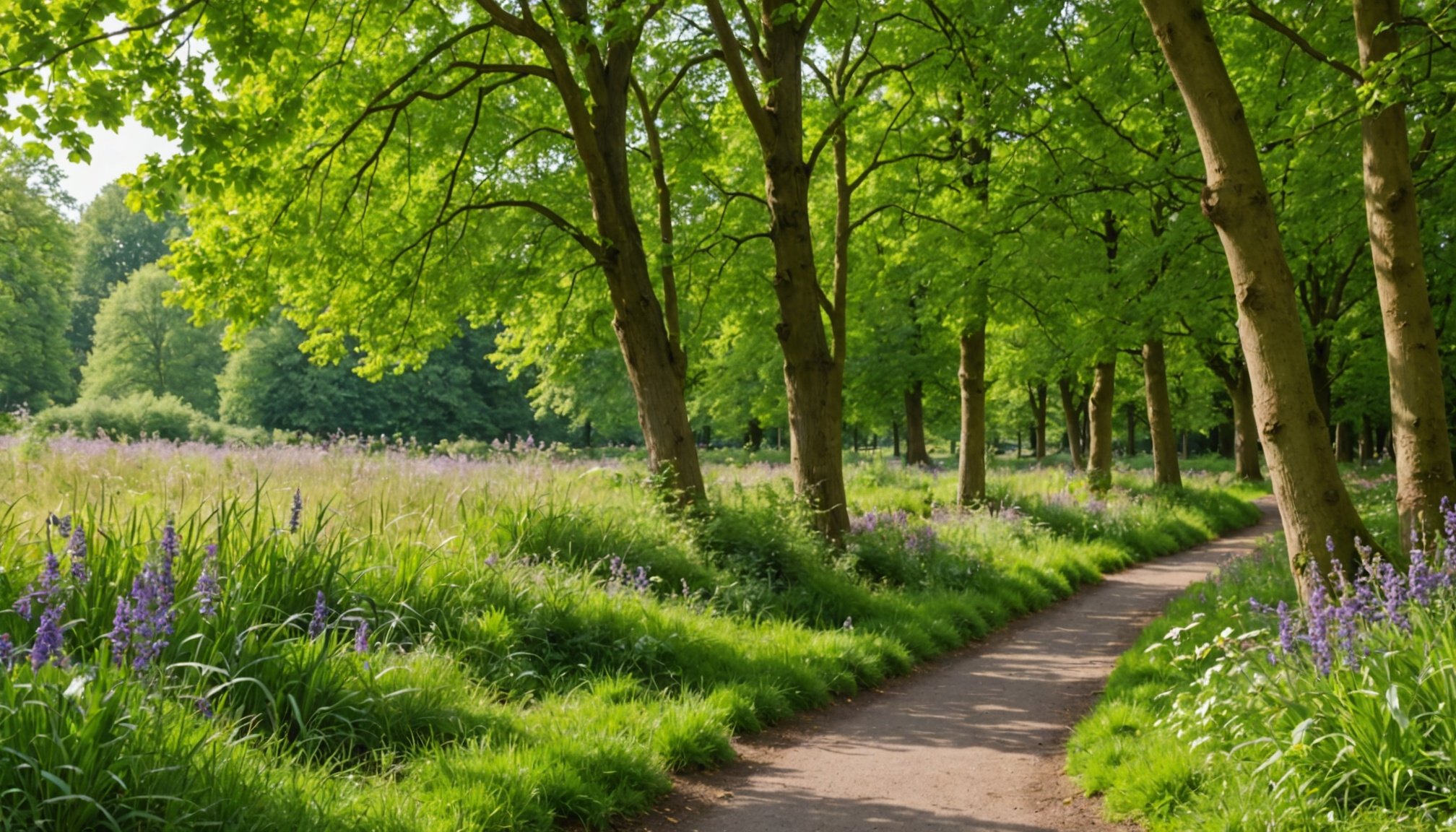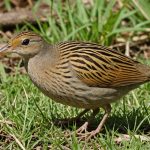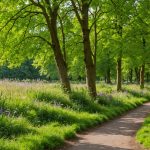Overview of Urban Green Spaces and Biodiversity in the UK
Urban green spaces are vital for supporting biodiversity in UK cities. These natural havens provide essential habitats for a range of wild species, ensuring the survival and prosperity of UK wildlife in otherwise concrete-dominated environments. Biodiversity within these green spaces contributes to ecological stability, benefiting urban dwellers by improving air quality, reducing heat, and enhancing quality of life.
However, the current status of biodiversity in UK cities presents several challenges. Recent studies highlight a worrying trend of species decline, attributed to habitat loss, pollution, and climate change. While many cities boast public parks and reserves, the fragmentation of these urban green spaces limits their capacity to support thriving ecosystems.
Lire également : Reviving the corncrake: a deep dive into uk zoo breeding programs for endangered species conservation
Wildlife habitats in urban areas face specific challenges. Urban development often results in the destruction of natural habitats, reducing critical spaces where wildlife can thrive. Furthermore, pollution, both air and soil, poses a significant threat to biodiversity, disrupting the delicate balance required for species survival.
Opportunities exist to address these concerns by increasing investment in urban planning that incorporates robust green spaces. By expanding and connecting these areas, cities can enhance biodiversity, providing refuge for endangered species and boosting the overall health of urban environments. This proactive approach not only supports wildlife but also enriches urban living for human residents.
Avez-vous vu cela : Top Strategies for UK Pet Owners to Protect Local Wildlife While Enjoying Countryside Walks
Effective Strategies for Enhancing Wildlife Habitats
Enhancing wildlife habitats in urban areas is crucial for fostering biodiversity and supporting ecological balance. Implementing effective strategies can lead to thriving environments where both urban wildlife and humans coexist harmoniously.
Creating Native Plant Gardens
Incorporating native plants into urban landscapes offers significant benefits for local wildlife. Native flora provides essential food, shelter, and breeding sites, supporting a variety of wildlife from birds to insects. Designing wildlife-friendly gardens involves choosing plants that thrive in the local climate and soil conditions, making sustainable choices that require less water and maintenance. A well-designed garden not only enhances biodiversity but also creates a serene refuge for both wildlife and people.
Installing Wildlife-Friendly Structures
Various wildlife-friendly structures, such as birdhouses and bat boxes, can be integrated into urban settings. These structures offer safe spaces for nesting and roosting, ultimately increasing habitat capacity. Best practices include placing these structures at optimal heights and orientations, using durable materials, and ensuring regular maintenance. Urban initiatives across cities have demonstrated success by implementing these simple yet effective enhancements, fostering urban wildlife in ways that align with local community goals.
Promoting Sustainable Land Management
Adopting sustainable land management principles is vital for enhancing habitats while mitigating negative impacts on the environment. Strategies include reducing pesticide use, promoting organic practices, and regularly assessing habitat quality. Sustainable practices not only improve the resilience of urban ecosystems but also contribute to a healthier environment for all inhabitants, promoting long-term ecological and social benefits.
Community Involvement and Education
Community involvement plays a pivotal role in conservation efforts. When individuals are engaged, they are more likely to support initiatives that protect local biodiversity. By participating in community tasks, such as habitat restoration or cleanup projects, citizens can contribute significantly to ecological preservation.
Education stands as a cornerstone of this involvement. Through public education campaigns, communities can raise awareness about the challenges facing local wildlife and the environment. Organising workshops, talks, and interactive sessions are effective strategies to disseminate knowledge. Schools, as educational hubs, are perfect venues for these activities, enabling students to grasp the importance of biodiversity from an early age.
One of the most effective strategies is fostering biodiversity awareness by showcasing successful community projects. For instance, a local urban garden project not only provides a green space but also serves as a living classroom about native plants and animals. The impact of such projects is multi-fold; they improve habitats while enhancing community bonds.
Ultimately, building networks of informed and engaged community members holds immense potential for the future of conservation. By understanding and actively participating in efforts to protect local ecosystems, individuals can create profound, lasting effects on their surroundings. This dynamic aligns with the broader goal of sustaining a healthy balance between humans and nature.
Policy and Legislation Impacts on Wildlife Habitats
Policy and legislation play a critical role in the conservation of wildlife habitats, especially in urban areas. Environmental regulations not only protect various species but also guide urban planning policies to ensure sustainable development.
Overview of UK Environmental Legislation
The United Kingdom has robust environmental regulations aimed at protecting urban wildlife and their habitats. Key legislation includes the Wildlife and Countryside Act 1981 and the Conservation of Habitats and Species Regulations 2017. These laws provide a framework for species protection, ensuring that urban planning policies incorporate eco-friendly practices. Local governments are pivotal in enforcing these regulations, often collaborating with non-governmental organizations (NGOs) to bolster habitat conservation efforts. Effective partnerships between governmental bodies and NGOs enhance resource allocation for habitat protection projects, leading to improved conservation outcomes.
Integrating Wildlife Considerations in Urban Planning
In urban planning, incorporating biodiversity assessments is essential. These assessments evaluate the ecological impact of new developments and ensure that wildlife corridors and green spaces are included in urban designs. By prioritizing these elements, cities can harmoniously blend urban growth with ecological preservation. Noteworthy examples include Exeter and Bristol, where urban developments successfully integrate wildlife habitats into public spaces, showcasing models of sustainable urban planning. Encouraging such practices ensures that both urban development and wildlife conservation progress hand in hand, fostering environments where both humans and wildlife coexist peacefully.
Resources and Organizations Supporting Urban Wildlife
In urban environments, numerous wildlife conservation resources are available to aid in preserving and enhancing habitats. Organisations like the Habitat Conservation Trust Foundation and the Urban Wildlife Institute play pivotal roles in advocating for and implementing strategies that boost urban biodiversity. These groups focus on areas like habitat restoration, monitoring ecosystems, and education.
Community groups and individuals have access to a variety of resources, including financial grants, educational workshops, and volunteer programs. For example, the National Wildlife Federation offers tools that support creating wildlife-friendly spaces in neighborhoods. With these resources, communities can actively contribute to habitat support initiatives. They also provide guidelines on how to engage in local conservation projects effectively.
Collaborative efforts are critical to successful urban conservation strategies. By pooling resources and expertise, both organizations and local initiatives can surmount challenges that might be insurmountable alone. Initiatives such as community-led bird monitoring or urban beekeeping projects can provide valuable data on species presence and health, which can inform further action.
These collective efforts underscore the importance of concerted actions and shared responsibilities in fostering vibrant urban ecosystems. Engaging with these resources not only benefits wildlife but also enhances urban living quality, reflecting a profound interplay between nature and city life.
Overview of Urban Wildlife Habitats
In the heart of bustling cities, urban wildlife habitats emerge as critical sanctuaries, bolstering biodiversity and ensuring ecosystems thrive even in concrete jungles. These spaces are essential in facilitating biodiversity in cities, allowing numerous species to coexist with human development. Urban areas, often viewed as barren, surprisingly support diverse life forms, from birds and insects to mammals and amphibians, creating rich tapestries of life.
Despite their significance, these habitats face numerous challenges in urban spaces. Pollution, habitat fragmentation, and human encroachment heavily threaten wildlife, making conservation efforts vital. Moreover, the increasing demand for land development often disregards the ecological impact, further endangering these ecosystems.
In the UK, urban ecology is addressed through a blend of statutory and non-statutory conservation measures. Statutory conservation involves legal frameworks and protected areas ensuring wildlife receives the necessary protection. Non-statutory efforts, on the other hand, include voluntary community projects and initiatives, focusing on habitat restoration and species preservation within urban settings. These efforts highlight the collaborative approach necessary to sustain and protect biodiversity in cities, encouraging active participation and awareness about the vital role urban ecology plays in a balanced environment.
Ensuring the survival and flourishing of urban wildlife habitats requires conscious, sustained action and broad engagement.
Practical Strategies for Enhancing Urban Green Spaces
Urban green spaces offer a unique opportunity for enhancing biodiversity and improving city life quality. In this regard, various habitat improvement strategies can be implemented in city parks to make them more sustainable and ecologically beneficial.
Creating Diverse Planting Schemes
One effective approach is to develop diverse planting schemes. These schemes involve incorporating a wide variety of plants, which supports a multitude of wildlife species. By mimicking natural ecosystems, these schemes can provide a habitat for insects, birds, and other fauna, enriching urban biodiversity.
Incorporating Native Species
Additionally, incorporating native species in urban green spaces is crucial. Why are native plants important in a city park setting? Native plants are well-adapted to local climates and soil conditions, require less maintenance, and are more resilient to pests. In the UK, key native species like the common oak, holly, and bluebells play a significant role in supporting local wildlife.
Implementing Green Corridors
Another strategy is the implementation of green corridors. These are patches of vegetation that connect isolated green spaces, allowing wildlife to move safely across urban landscapes. Optimally, designing these corridors includes considering their location, the needs of wildlife, and their access to resources. By bridging gaps between green spaces, green corridors facilitate ecological networks, ultimately fostering a thriving urban ecosystem.
Community Engagement and Education
Community involvement is crucial for the success of wildlife conservation initiatives. With a community actively participating in projects, the scope of impact can broaden significantly. Empowering the public to become stewards of their local environment fosters a deeper understanding and commitment to preservation efforts.
Effective public engagement can be achieved through a variety of strategies. One approach is hosting interactive workshops that educate participants about local wildlife. The aim is to develop a connection to wildlife education by making it relatable and informative. Schools can also integrate wildlife studies into their curriculum, providing young learners with the knowledge to appreciate and protect their natural surroundings.
Case studies highlight the power of community-led habitat projects. In some regions, community groups have successfully restored degraded habitats by planting native species and creating wildlife corridors. These initiatives often involve organizing community clean-up days, incentivizing participation, and celebrating achievements publicly. Such projects demonstrate the transformative effect of community-led actions and underline the potential for sustained engagement.
This hands-on approach not only improves biodiversity but also creates a strong sense of ownership among community members, ensuring the long-term success of conservation efforts. By building local networks of informed individuals, we create resilient ecosystems supported by passionate communities.
Case Studies of Successful Urban Wildlife Initiatives
Successful urban wildlife projects play a crucial role in enhancing biodiversity in city landscapes. Across the UK, numerous cities have implemented innovative approaches to foster urban wildlife. A notable example is Brighton’s effort to transform underutilized spaces into vibrant green habitats. This project not only increased local biodiversity but also engaged the community through educational workshops.
A remarkable conservation case study is the “Wild West End” initiative in London. This project integrates green roofs and living walls on commercial buildings, creating a network of urban wildlife corridors. By promoting natural pollination and safe havens for species, this initiative has shown measurable positive outcomes for urban ecology.
Analysis of these innovation in biodiversity initiatives highlights key lessons. Creating habitats within urban environments requires collaboration among stakeholders, including local governments and citizens. Moreover, any successful endeavour must consider the specific needs of targeted flora and fauna.
Effective future projects could mirror best practices seen in these examples. Recommendations include setting realistic goals, using technology to monitor progress, and maintaining engagement with local communities. Innovative projects, combined with lessons learned, contribute positively to the integration of wildlife in urban settings, proving essential in the landscapes of modern cities.
Environmental Impact Considerations
Understanding environmental impact is crucial in urban planning, especially concerning local ecosystems. Urban ecology assessments are vital to evaluate how development projects may influence surrounding habitats. These assessments help identify potential threats to biodiversity and inform sustainable planning practices.
Assessing Impact on Local Ecosystems
Local ecosystems can be significantly affected by urban development. Through environmental impact assessments, we can determine how construction and activities may disrupt native species and ecological balance. Such assessments should consider factors like habitat fragmentation, pollution, and changes in water flow.
Long-term Benefits of Habitat Enhancement
Enhancing habitats can lead to sustainability and ecological health improvements. By creating green spaces and corridors, cities can support biodiversity and provide natural havens for wildlife. This not only helps maintain species diversity but also restores ecological functions over time, offering resilience against urban pressures.
Monitoring and Evaluation Methods
Monitoring and evaluating urban ecological projects is essential for their success. Techniques such as biodiversity surveys and remote sensing can track changes in habitat quality and species populations. Regular evaluation ensures projects stay aligned with their sustainability goals, allowing for adaptive management when needed. These ongoing assessments are integral to maintaining environmental health in urban areas.
Funding and Resources for Habitat Enhancement Projects
Securing funding opportunities for habitat enhancement projects is crucial for advancing conservation efforts in the UK. Various sources offer significant financial support which can be accessed by individuals and organisations. These include government grants, charitable foundations, and local community funds. Navigating these options requires understanding the criteria and application processes for each funding body.
Writing effective grant proposals is a necessary skill for obtaining these monies. Proposals should clearly outline the project goals, expected outcomes, and the benefits to wildlife and local communities. Providing detailed budgets and evidence of potential impact can strengthen applications. It’s equally important to tailor each proposal to the specific guidelines of the funding source.
Beyond funding, establishing strong networking and partnership opportunities can enhance project success. Connecting with local governments and environmental organisations can provide in-kind support such as expertise, volunteer hours, or additional resources. Collaborations often lead to shared knowledge and greater impact in the long-term.
Engaging with stakeholders and showcasing the success of past projects can also increase the attractiveness of proposals. As resources are often limited, demonstrating effective resource allocation and efficient use of funds is vital in securing future support. The sustainable growth of habitat projects relies on these proactive strategies.











